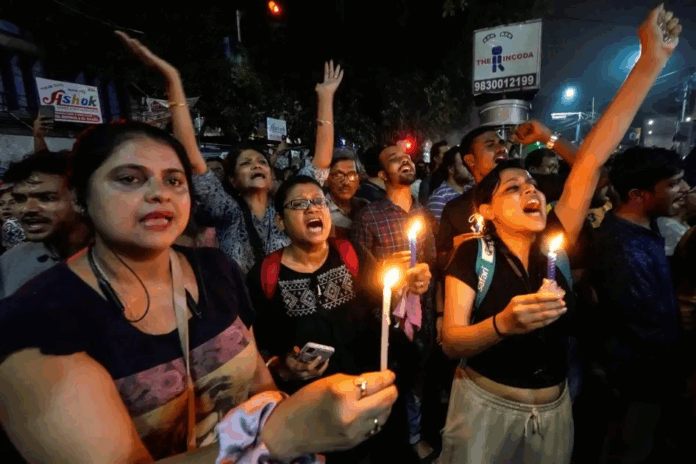Rape remains a grave and persistent crime against women in India, with official data revealing the scale and complexity of the crisis.
Despite legal reforms and widespread public outrage following high-profile cases, thousands of women and girls continue to be victimised every year.
According to the National Crime Records Bureau, rape is the fourth most common crime against women in India.
In 2021, 31,677 rape cases were officially registered nationwide. Historical data shows that a rape was reported every 15 minutes in 2018 and every 16 minutes in 2019, indicating a persistently high frequency of such crimes.
The national average rape rate in 2019 stood at 4.9 per 100,000 population, with significant variation across states. Rajasthan recorded the highest rate at 15.9, while states such as Nagaland (0.8), Tamil Nadu (1.0), and Bihar (1.3) reported the lowest rates. Between 2014 and 2022, five states—Rajasthan, Madhya Pradesh, Uttar Pradesh, Maharashtra, and Assam—accounted for more than half of all rape cases reported in the country.
Recent data highlights an alarming increase in reported cases in some states. Madhya Pradesh witnessed a 19 per cent rise in rape cases from 6,134 in 2020 to 7,294 in 2024, averaging 20 cases daily.
Odisha also saw an eight per cent increase in 2024 compared to the previous year, with 3,054 cases registered. Officials attribute these increases partly to improved reporting mechanisms and population growth, though the figures remain deeply concerning.
Marginalised communities bear a disproportionate burden of this violence. In Madhya Pradesh, 1,769 victims in 2024 were from Scheduled Castes and 2,062 from Scheduled Tribes, with cases among tribal women rising by 26 per cent over five years.
Districts like Dhar, Jhabua, Khargone, Alirajpur, and Ratlam reported the highest numbers of cases involving tribal women.
Minors are particularly vulnerable. Human Rights Watch estimates that over 7,200 minors are raped annually in India, many of whom face additional trauma related to trafficking and forced prostitution.
In 2019 alone, nearly 5,000 of the 32,033 reported rape cases involved minors.
Experts caution that official statistics likely understate the true scale of the problem. Parliamentary estimates and independent studies suggest that up to 71 per cent of rapes go unreported due to fear of retaliation, social stigma, and mistrust of law enforcement.
Marital rape remains outside the scope of criminal law, further obscuring the full extent of sexual violence.
Conviction rates remain alarmingly low. Only about one in four reported rape cases leads to a conviction, with rates hovering between 27 per cent and 28 per cent in recent years.
In Madhya Pradesh, conviction rates for cases involving Scheduled Castes and Tribes are even lower, at 22 to 23 per cent, meaning the vast majority of accused individuals are acquitted, perpetuating a culture of impunity.
While some states have implemented measures such as increased patrolling, better reporting systems, and prioritising cases involving women and children, critics argue these efforts have yet to translate into significant improvements in safety or justice for survivors.
For 2023 and 2024, although exact figures for the interval between reported rapes are not explicitly published, the annual number of cases remains close to previous years’ totals of around 31,000 to 32,000.
This suggests that a rape continues to be reported approximately every 15 to 16 minutes nationwide.




